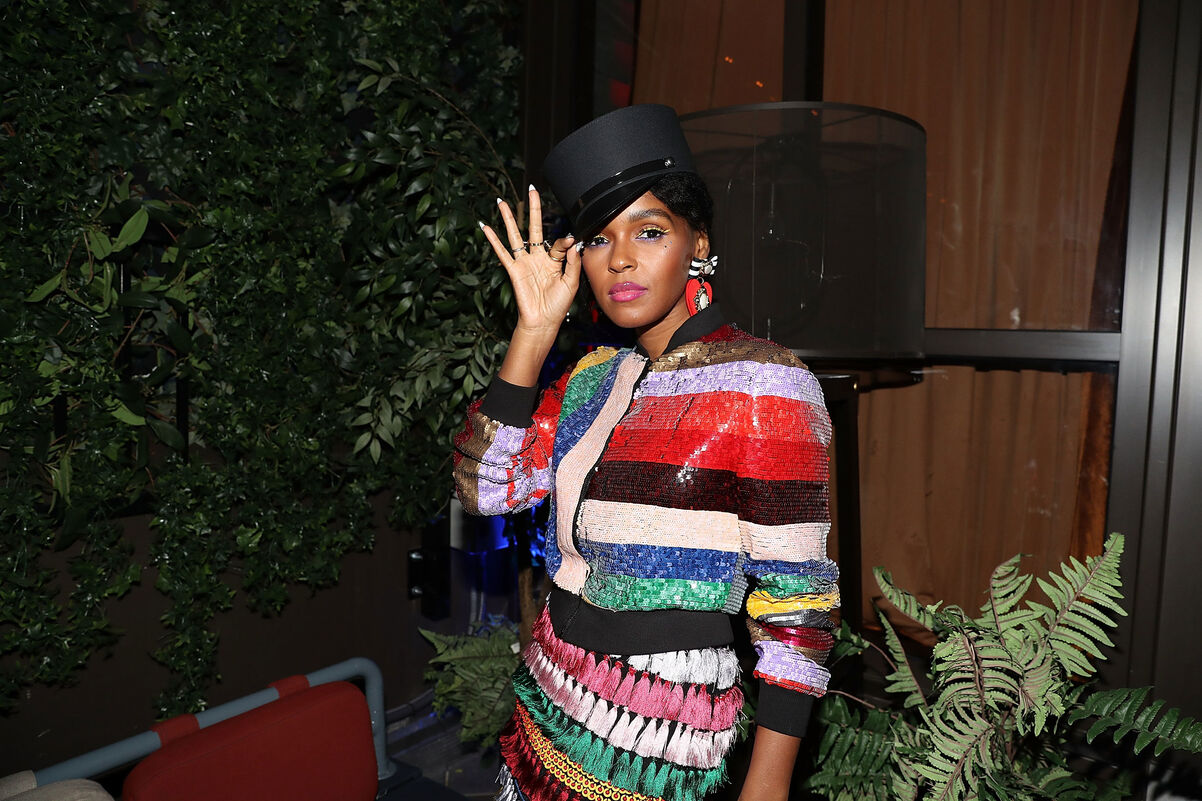Ever since she first travelled back from the year 2719 and sparked the Archandroid revolution, Janelle Monáe has championed the “other” in her music. Through the Afrofuturist lens of her alter ego, Cindi Mayweather, Monáe has explored themes of alienation and forbidden love throughout her discography, creating deliberate parallels between the experiences of this cybernetic character and the real-life communities who are marginalized in today’s society.
While The Archandroid hasn’t openly discussed the specifics of her own sexuality in public, Monáe has identified herself as “different” time and time again throughout the Metropolis series, something which has never been made more clear than in the build up to the release of her third album, Dirty Computer.
Not long after she “Made a fandroid outta yo’ girlfriend” in “Django Jane” and proclaimed that she’s an “emotional, sexual bender” on “Make Me Feel,” Monáe revealed that “PYNK” is her “favorite part” in a new video which is easily her most sexual outing yet. From the folds of her pants to a newfound focus on the Electric Ladies in her life, the video for “PYNK” is a veritable Wondaland of femininity that pays ode to the power of queer sexuality.
However, this isn’t the first time that queer themes have played a role in Janelle Monáe’s art. Join us as we bow down to the cybernetic messiah and pay tribute to the five queerest songs from her futuristic back catalog.
1. “Q.U.E.E.N.” (featuring Erykah Badu)
On the lead single taken from her second album, The Electric Lady, Monáe ascended to the throne that fans always knew she deserved, daring us to categorize her with the line “I defy every label.” Alongside the soul diva Erykah Badu, Monáe continues the song in this vein, asking listeners if she’s a freak “because I love watching Mary” and if she’s “good enough for your heaven.”
Lines like this speak to the ostracization of the LGBTQ community, yet Monáe tackles this somewhat sobering subject with strength, empowering queer listeners even further through her commanding use of drag language such as “throwing shade” and “serving face.” In many ways, Cindi Mayweather embodies Monáe’s own version of drag, wearing signature black and white suits that she’d later recall on “Django Jane” were criticized for “looking “too mannish.”
2. “Sally Ride”
It’s no coincidence that Monáe dedicated an entire song on “The Electric Lady” to Sally Ride, an openly gay astronaut who became the first American woman to visit space at the age of 32. Before she died on July 23, 2012, Ride had been in a same-sex relationship for the previous 27 years and while this isn’t actively discussed in the song, lyrics such as “You’ve got the right to choose” and “I wanna feel the real love” undoubtedly speak to her sexuality. Among the various space-themed motifs heard in the track, reference is also made to a woman called “Mary,” who is probably the same person that the Electric Lady loves to watch in the song titled “Q.U.E.E.N.”, which is taken from the same album.
3. “Electric Lady” (featuring Solange)
The title track to Janelle Monáe’s second album is one of her most memorable odes to the fairer sex. Not only does it refer explicitly to the overarching concept of her discography and Cindi Mayweather’s android revolution, but “Electric Lady” can also be interpreted as a queer love song. Adoring lyrics like “Once you see her face, her eyes, you’ll remember” detail Monáe’s infatuation with the woman of her desires and when she explains that “We the kind of girls who ain’t afraid to get down,” the screaming that she refers to in the next line immediately takes on a whole new meaning.
4. “Mushrooms and Roses”
A woman called Mary recurs throughout Monáe’s discography, but to discover who she might be, listeners must follow in Cindi Mayweather’s footsteps and travel back in time to the release of her first album, The Archandroid. Here, a song called “Mushrooms and Roses” introduces us to another cybernetic rebel called Blueberry Mary who has “long, grey hair, a beautiful smile and rosy cheeks.” According to Monáe, Mary is “crazy” about her, although the feeling does appear to be mutual given how much she’s sang about this Electric Lady since.
Further talk of a place “Where all the lonely droids and lovers have their wildest dreams” reinforces the themes of forbidden love that first characterized Monae’s music back when Cindi Mayweather risked disassembly for a human called Anthony Greendown in Metropolis: Suite I (The Chase).
5. “Givin’ Em What They Love” (featuring Prince)
For most of this funkadelic duet between Monáe and her musical idol, she and Prince trade bravado in a series of cocky declarations that culminate in them describing their love for each other. However, things take a decidedly queer turn in the outro when the Electric Lady takes her own lady back to the lobby of her hotel for some “undercover love.”
The song comes to an end at this point, so we’ll never know how the secret rendezvous turned out. However, it’s entirely possible that references like this could be explained further in the visual album that Monáe will release alongside the record Dirty Computer on April 27. And who knows? Maybe it’ll turn out that Tessa Thompson’s character was the one that Monáe has been longing for all this time across the course of three albums and a storyline that spans centuries of narrative.
Don't forget to share:
Help make sure LGBTQ+ stories are being told...
We can't rely on mainstream media to tell our stories. That's why we don't lock our articles behind a paywall. Will you support our mission with a contribution today?
Cancel anytime · Proudly LGBTQ+ owned and operated
Read More in Culture
The Latest on INTO
Subscribe to get a twice-weekly dose of queer news, updates, and insights from the INTO team.
in Your Inbox













